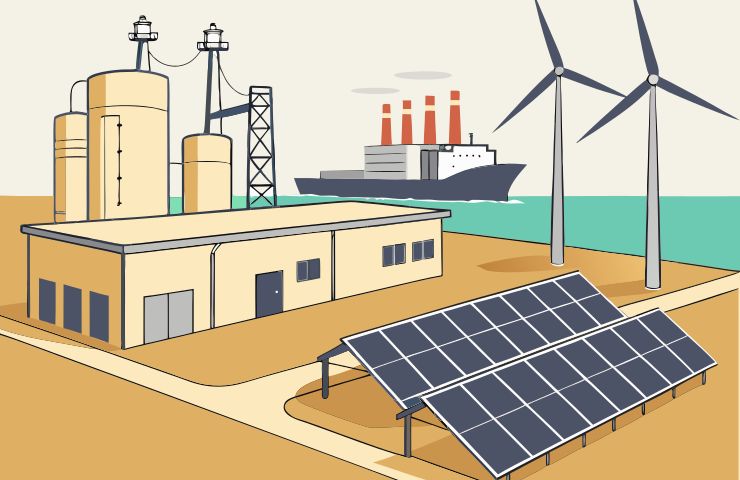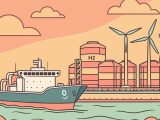
Ammonia production in Egypt: Destiny Energy Invests $210M in Egyptian Green Ammonia Plant
November 12, 2025Singapore-based Destiny Energy—with CEO Vijay Sirse at the helm—just greenlit a hefty $210 million injection into a green ammonia plant smack in Egypt’s Suez Canal Economic Zone (SCZONE). Thanks to the General Authority for Investment and Free Zones (GAFI) backing, this facility’s set to crank out 100,000+ metric tons of zero-carbon ammonia each year, mostly bound for Europe, all powered by onsite wind and solar farms.
Strategic Impact
This move couldn’t come at a better time. Europe’s scrambling to lock down 4 million tons of green ammonia by 2030 under its CBAM rules, and Destiny Energy is staking its flag in the MENA corridor—think strategic shipping lanes, sweet investor perks, and a springboard to export markets. Egypt, meanwhile, is doubling down on low-carbon industry, swapping out old-school hydrocarbons for cleaner commodities. And with GAFI’s green-finance scheme letting investors recoup up to 55 % of their capital costs over seven years, the math looks pretty compelling.
Project Details
Signed on 12 November 2025, the GAFI pact lays out all the nuts and bolts:
- Annual output: 100,000+ metric tons of green ammonia (~300 t/day) and 53 t/day of green hydrogen
- Process: Electrolysis runs on dedicated solar PV arrays and coastal wind turbines, feeding a Haber-Bosch unit for near-zero emissions
- Incentives: Slash up to 55 % off your tax bill over seven years via the National WFES platform
- Offtake: Primarily serving European industrial players and fertilizer giants
- Infrastructure: Deep-water port, grid hookups, and fast-track customs under SCZONE rules
Historical Context
Most traditional ammonia factories puff out roughly 1.6 tons of CO₂ for every ton of product using natural gas. With global decarbonization and Europe’s looming carbon border tax (CBAM), clean ammonia demand is skyrocketing. SCZONE—kicked off in 2015—boasts deep-water berths, abundant renewable resources, and a friendly regulatory vibe. Since 2022, GAFI’s been hustling at events like the Africa Singapore Business Forum, drawing a wave of renewables projects and cementing the zone’s reputation as a green-export hub. For Destiny Energy, already a player in Singapore’s clean-energy scene, SCZONE offers competitive land and power rates, export-ready infrastructure, and rock-solid policy support.
Technical Snapshot
At its core, this plant hinges on a modular electrolyzer setup that splits water into hydrogen and oxygen using renewable power—hello low-carbon hydrogen production and electrolysis. That green hydrogen then teams up with atmospheric nitrogen in a Haber-Bosch reactor to churn out ammonia, completely sidestepping fossil feedstocks. It’s a textbook case of industrial decarbonization, showing how scaling up electrolysis and hydrogen tech can redefine heavy industry.
Implications and Takeaways
Beyond the headline numbers, this SCZONE play packs several strategic punches:
- Positions Egypt as a go-to exporter of green hydrogen and green ammonia to Europe
- Creates hundreds of jobs on-site, plus more in construction, operations, and logistics
- Kicks off a wave of renewable energy additions and grid upgrades across the region
- Helps manufacturers stay compliant with EU CBAM rules, advancing industrial decarbonization
- Offers a replicable blueprint for North African clean-energy ventures
Of course, none of this pans out without solid policy backing and long-term offtake deals. As competition for green power heats up, the project’s bottom line will hinge on electricity prices and financing terms.
If you’re keeping tabs on the sustainable energy shift, the SCZONE green ammonia plant is one to watch. Big construction milestones and European offtake contracts will be your bellwethers—pay attention to those, and you’ll see how quickly green ammonia reshapes global trade.


 With over 15 years of reporting hydrogen news, we are your premier source for the latest updates and insights in hydrogen and renewable energy.
With over 15 years of reporting hydrogen news, we are your premier source for the latest updates and insights in hydrogen and renewable energy.